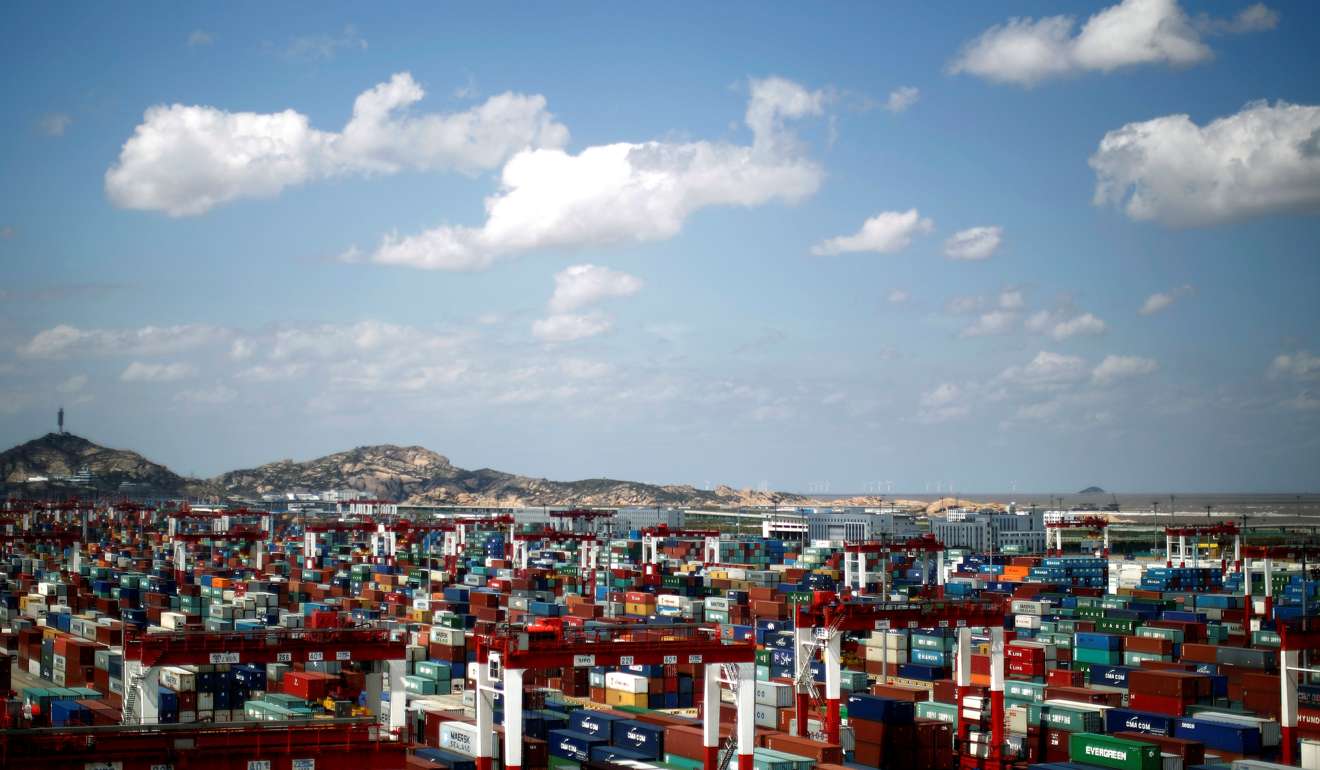
China posts rare trade deficit but is it enough to fend off Trump’s trade claims?
China reported its first monthly trade deficit in three years on Wednesday on the back of a surge in imports, offering Beijing ammunition against US President Donald Trump’s claims of unfair trade practices.
Imports rose 44.7 per cent year on year to 886.68 billion yuan (HK$998 billion) in February, while exports rose just 4.2 per cent from a year earlier to 826.32 billion yuan, leaving a trade deficit of 60.36 billion yuan, the General Administration of Customs said.
In US dollar terms, China had a deficit of US$9.1 billion last month. The last time China reported a trade deficit was in February 2014 when imports exceeded exports by US$31.5 billion.
February’s trade result was released just a day after the US Commerce Department reported the US’ biggest trade deficit in nearly five years for January, including a widened US$31.3 billion merchandise trade deficit with China.
According to China’s customs authorities, China had a US$10.4 billion deficit with the US in February, narrowing from US$21.4 billion in January. Beijing and Washington usually vary on bilateral trade data.
But analysts said the result might not be enough to change Trump’s attitude towards China or lower the risk of a trade conflict between the two countries.
“The Trump administration is unlikely to look at China’s overall trade performance. Their focus is on trade between China and the US,” Hong Kong-based Citigroup chief China economist Liu Li-gang said.
But in theory, China could use the February trade data to bolster its case that it was not manipulating its currency to gain a trade surplus, Liu said.

Beijing has long argued that it does not deliberately pursue trade surpluses, but Trump remains unconvinced that China is not manipulating its currency.
Deloitte China chief economist Xu Sitao said China’s February trade number was unlikely to reduce the prospect of Washington making protectionist moves.
“China’s most effective weapon remains meaningful market access to the service sector which could prompt US companies to lobby [Washington] on China’s behalf,” Xu said.
The surge in imports was helped by China’s domestic economic recovery and a rebound in key commodity prices.
The average price of imported iron ore increased 83.7 per cent in the first two months from a year earlier, while the average price of imported crude oil jumped 60.5 per cent, the customs administration said.
Analysts said the February data could be misleading because of the Lunar New Year effect, but it was possible there were capital outflows disguised as import costs.
With China relatively relaxed about cross-border payments under the trade account, investors sometimes disguise capital outflows as trade payments, deliberately inflating imports to move money out of the country.
Claire Huang, a China economist at Societe Generale, said that given the outflow pressure facing the country, it was possible that import invoices had been overstated to move money offshore.
But Huang added that the amount should be “fairly small” and would not change the general picture of the country’s total exports and imports.

